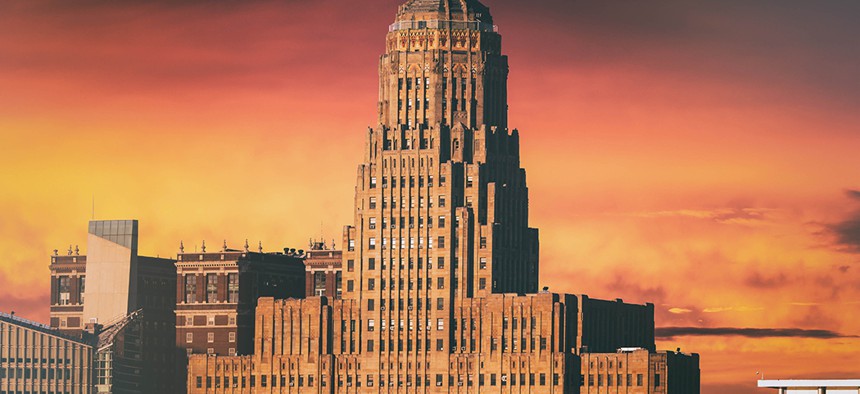I’m from Buffalo, by which I mean – like a lot of people “from Buffalo” – that I’m from a suburb of the city and now live far away from the region.
For most of my life, Buffalo was best known for and proudest of what it once was: The eighth-largest American city at the turn of the 20th Century. The first major American city with widespread electricity – the “City of Light," provided by Nikola Tesla himself. Its history as an industrial and architectural leader includes Frank Lloyd Wright houses, Frederick Law Olmsted parks, the Erie Canal and the American Steamship Company.
Of course, that doesn’t reflect Buffalo as it currently stands today, or for the past 60 years. The city’s population has dropped – usually by double digits – in every decennial Census since 1960. Now Buffalo, like similar Rust Belt outposts such as Detroit and St. Louis, has become a poster child for post-industrial blight.
Like those other older cities, Buffalo is trying to capitalize on its historical character and charm, and the yearly influx of college students – students make up nearly 7 percent of its population – to reinvigorate itself in the creative class and service economy era.
There are signs that it’s begun to work: The population decline has slowed, there is even population growth among young adults, and property values have increased in certain areas – even if, unfortunately, only in majority-white neighborhoods. And recently, the Ralph C. Wilson foundation announced it was donating $100 million to renovate LaSalle Park and complete the regional trail system.
Yet despite these achievements, the one word I would be hesitant to use when referring to Buffalo would be “hot.”
Enter the Washington Post.
The media loves nothing more than a counter-intuitive success story, even if it’s not completely true – like how you keep reading about Detroit’s resurgence while its population keeps dwindling. So imagine my surprise when the Post declared New York’s snow capital a “newly hot city” on Wednesday.
Of course, Buffalo’s renewal has been heralded back from the dead many times over the past decade. But the pace seems to keep picking up, leaving native Buffalonians to wonder if we have yet reached Peak Buffalo. Consider the recent history:
-In 2008, New York Magazine foretold us of the urban dream being sold for cheap in Buffalo, with the requisite musicians priced out of Brooklyn basking in the sunlight of their new apartment’s ample windows.
-In 2015, Gothamist proclaimed Buffalo the place where millennials live like kings – even if some of their treasure had been found in dumpsters.
-The dumpster divers didn’t dissuade Lonely Planet and Travel Pulse from declaring Buffalo a city on the rise. There’s even a website dedicated to its “rising."
-In 2016, Katie Couric came to Buffalo to document its “renaissance” for Yahoo! News. Her segment was titled “Buffalo is Back!”
-In January of this year, Thrillist gave us a listicle of reasons to visit “America’s most underrated city,” with chicken wings (of course) among the highlights. But you can get Anchor Bar wings in Midtown Manhattan while sipping on Tim Horton’s coffee. Those are remnants of old Buffalo. New Buffalo is encapsulated by what Thrillist labeled, “a late-night culture matched only by Miami and Las Vegas.”
-In June, The New York Times did a full slate of travelarticles on Buffalo, calling it “revitalized” and “reawakened.”
So suck it City Journal, which claimed in 2007 that Buffalo had no hope of making a comeback and that “government should stop bribing people to stay there.” Maybe the bribes have paid off after all – except for “Buffalo Billion” players who are going to prison for actually taking bribes.


